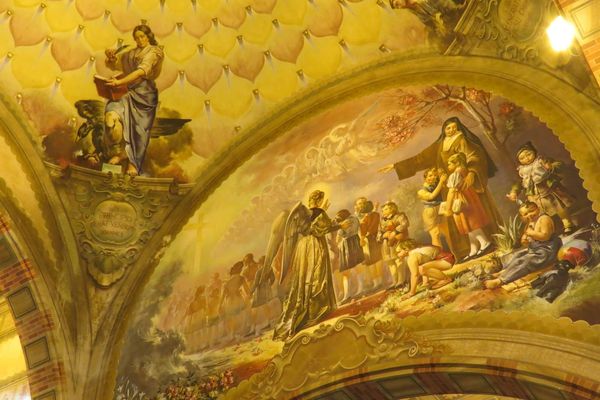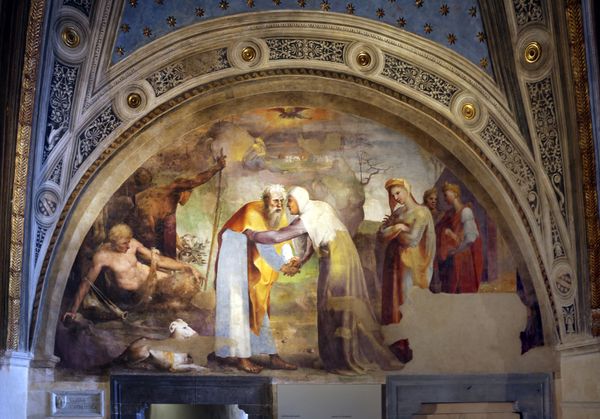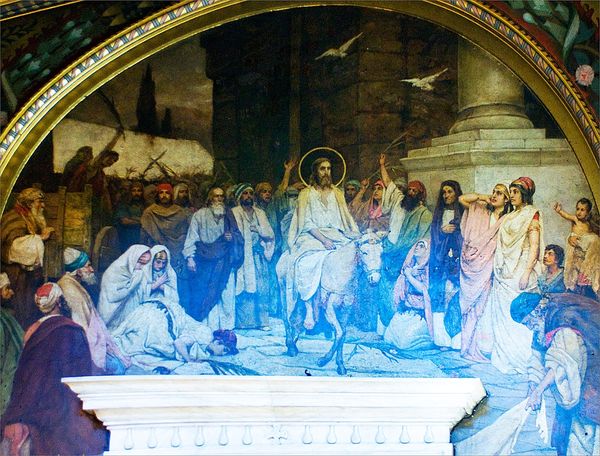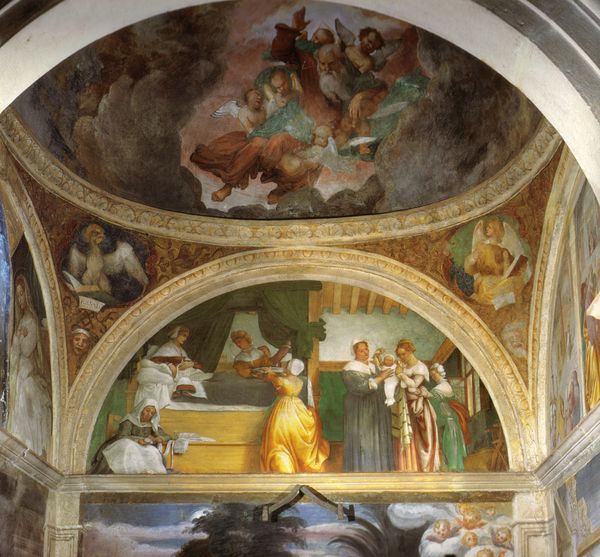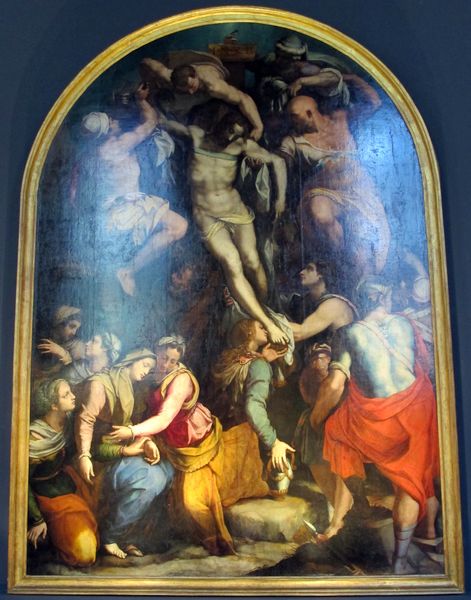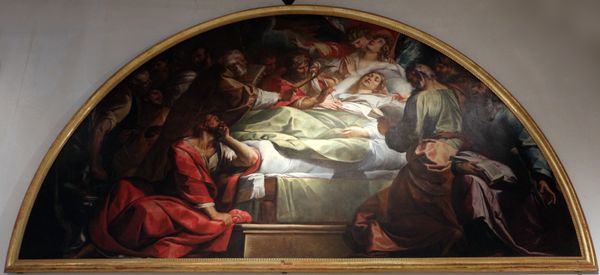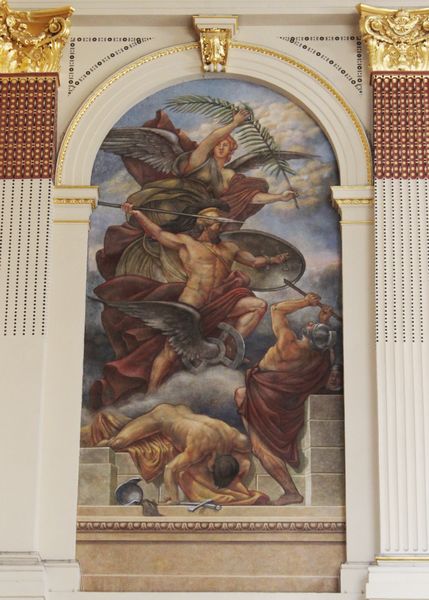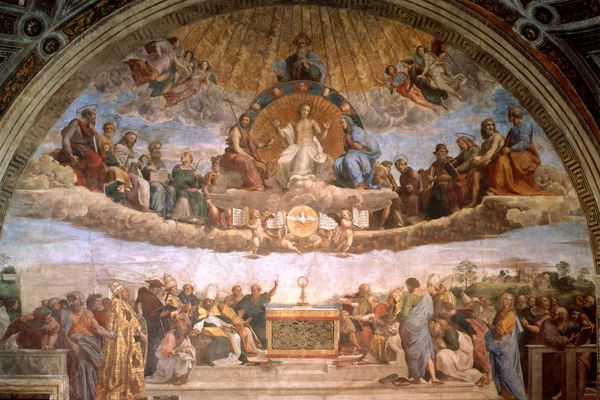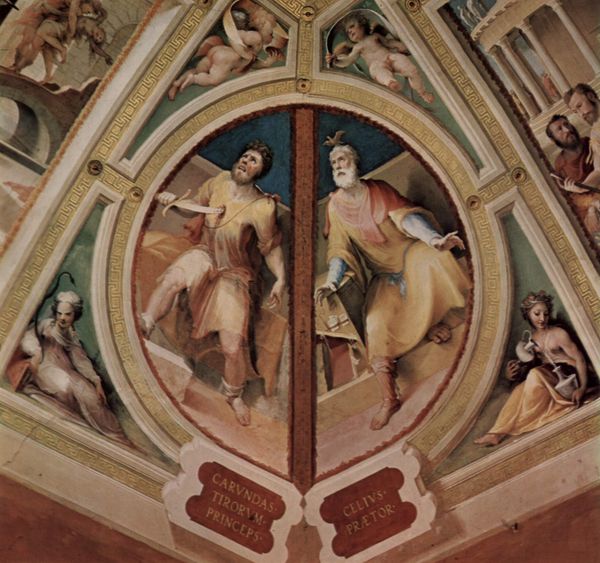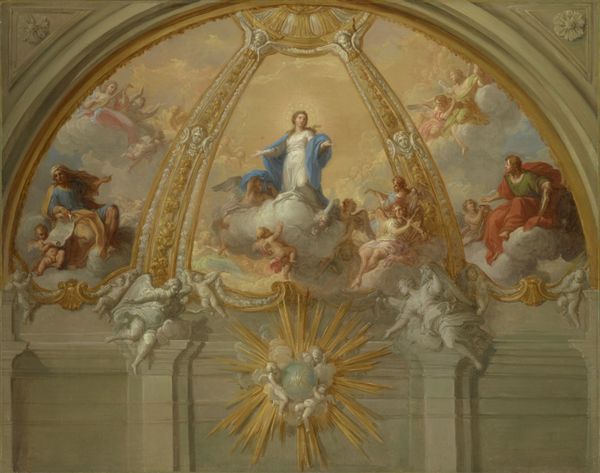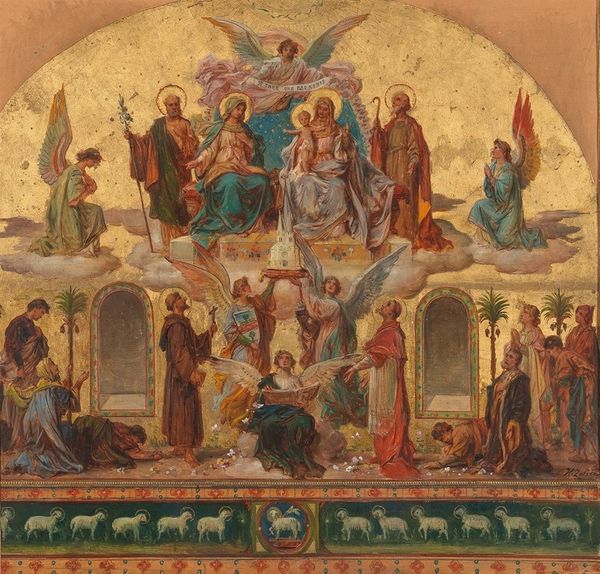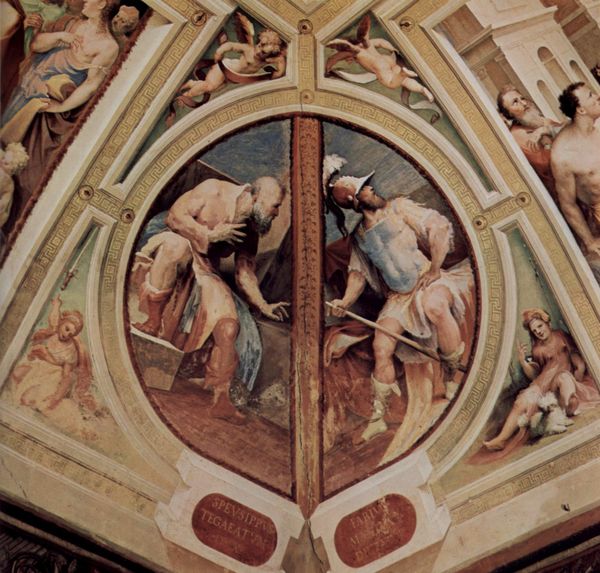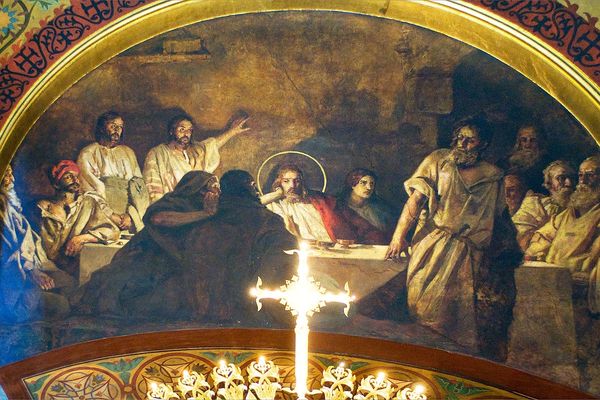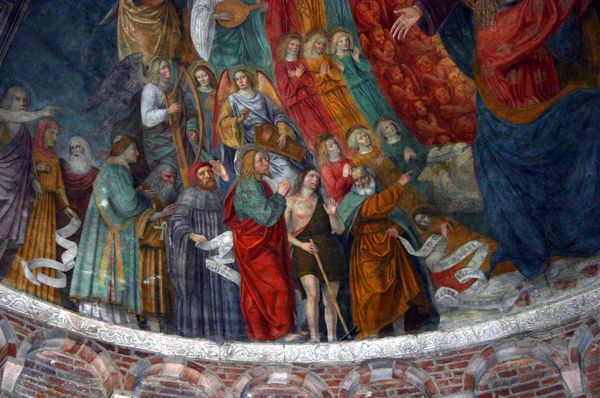
Copyright: Public domain
Editor: So, this is Théodore Chassériau's "The Descent from the Cross," painted in 1855, an oil mural. The somber colors and the figures clustered around the body evoke a strong sense of grief. What do you see as the key elements of this composition? Curator: Primarily, I am drawn to the orchestration of color and form. Note the arrangement of the figures – their postures and the folds of their garments. The artist utilizes a restricted palette to enhance the emotional gravity. Observe, too, how the curve of the painting's surface influences your viewing experience; it serves to almost enclose the viewer, inviting introspection. Editor: That's a good point. I didn't consciously notice that the form echoed the mood. But what about the way the figures are rendered? They seem quite idealized, almost theatrical. Curator: Precisely. Consider the inherent tension between the realism demanded by the subject and the ideal forms Chassériau employs. Is it a paradox, or is it through that stylization that he amplifies the event's significance? Think of how the precise anatomical depiction works with, or perhaps against, the clear emotional intent. The calculated arrangement is central to interpreting meaning. Editor: I guess it does elevate it beyond a simple historical record. Curator: Indeed. And, the considered balance within the composition—the light and shadow, the figure groupings—it all works to create a harmonious whole, albeit a mournful one. A unity born from structured grief, wouldn’t you say? Editor: It certainly offers a lot more depth to unpack when viewed through that formal lens. Thank you! Curator: My pleasure. Thinking structurally certainly enhances my understanding as well.
Comments
No comments
Be the first to comment and join the conversation on the ultimate creative platform.
